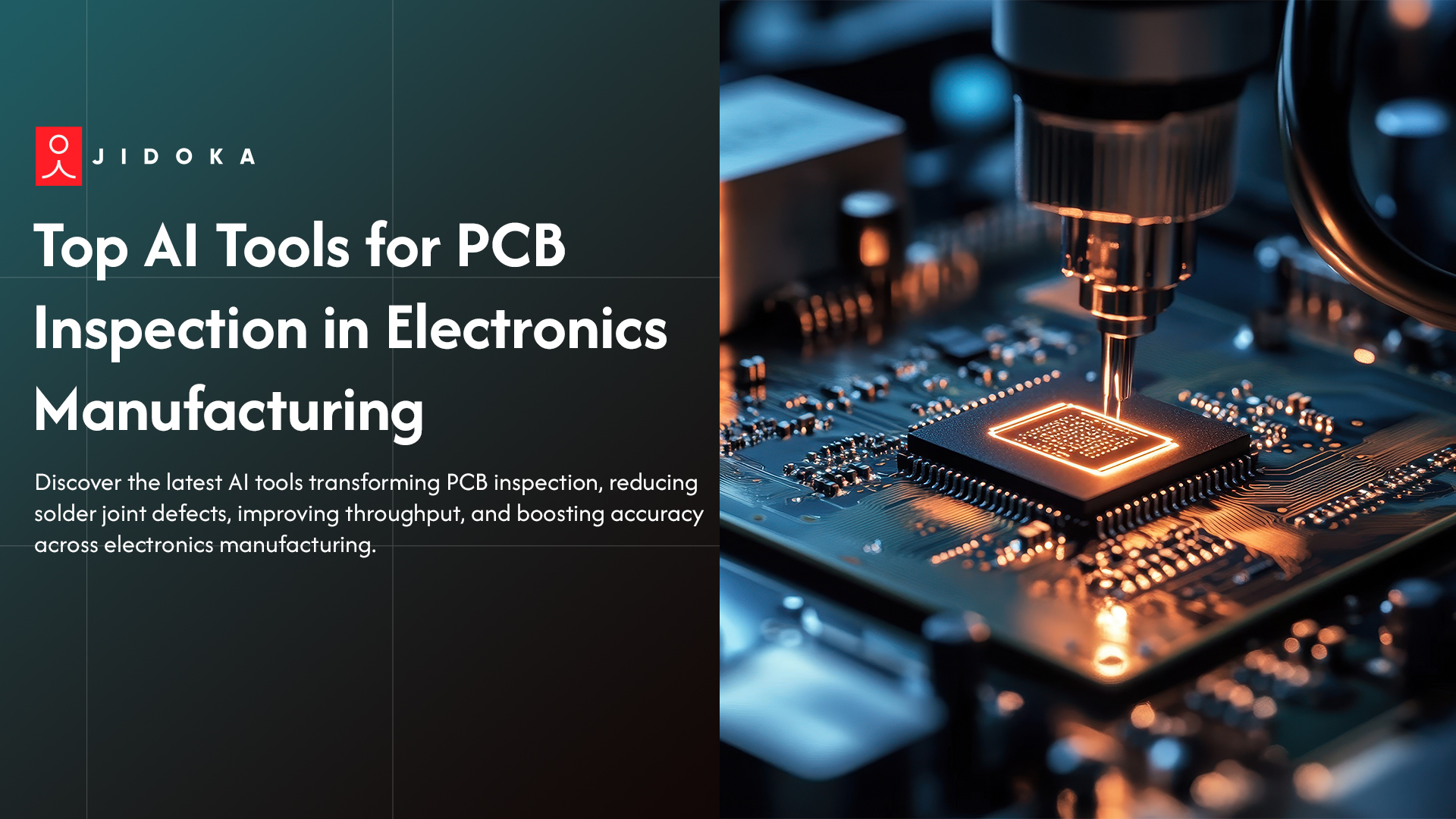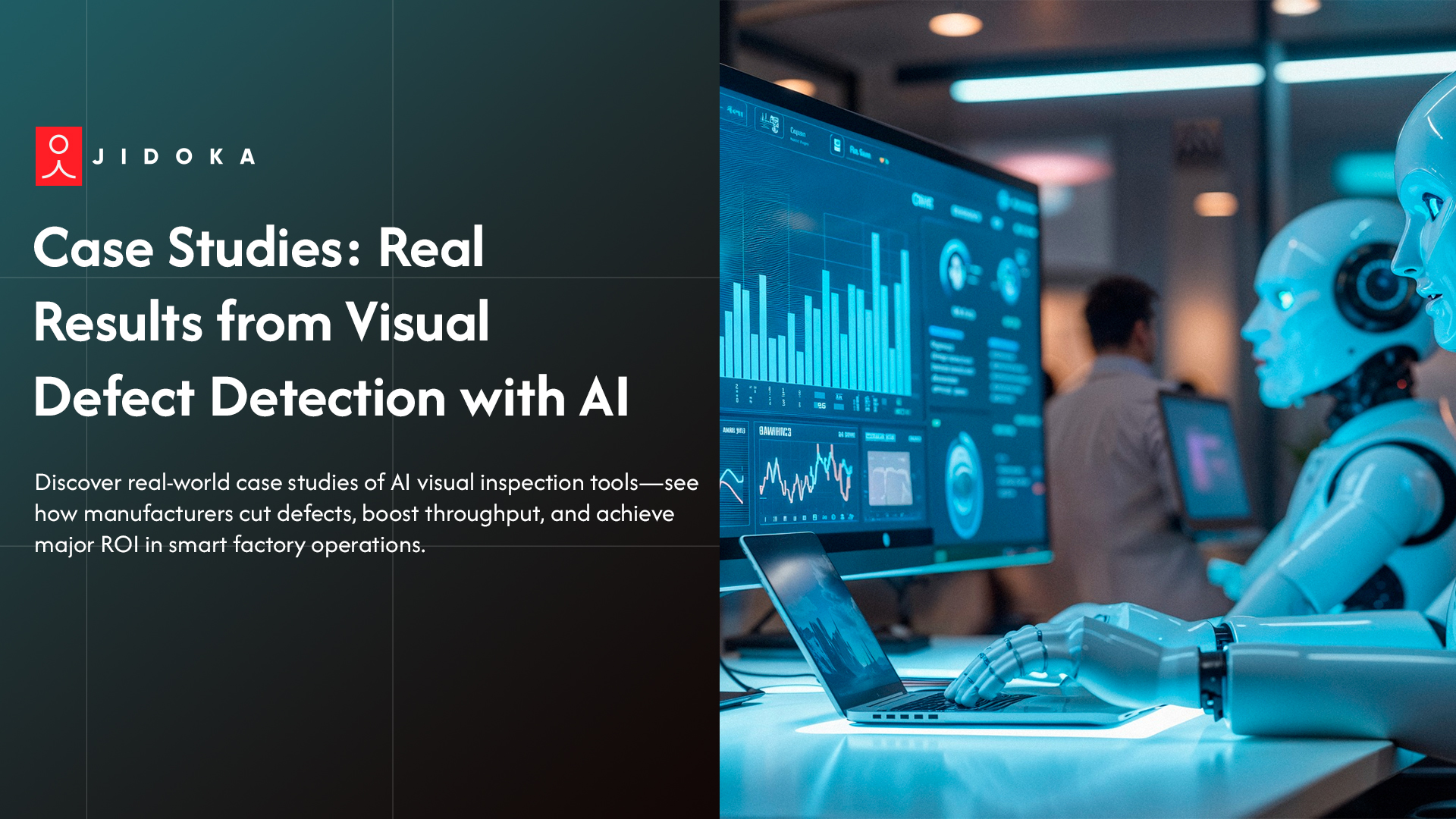Manual weld inspection and quality checks still drive most weld decisions on the shop floor. Inspectors walk the line, scan beads by eye, and try to spot every problem. Once volumes rise and joints get complex, this method starts to miss defects.
According to ASME data, about 32% of welding defects come from operator error and 41% from poor process conditions – both issues that automated vision-based inspection helps reduce. Computer vision with AI lets you run weld inspection on every part, right on the line.
With Jidoka Tech, you turn weld quality from a guessing game into a data backed process.
Why Upgrade Your Weld Inspection with Machine Vision AI?
Traditional weld inspection works for short runs and simple joints, but small flaws slip through once volume and complexity rise. Machine vision with AI gives you consistent eyes on every bead, so you fix issues at the station and build a data trail you can trust.
Limits of Manual Weld Inspection Today
Manual checks struggle when volume and variety grow. Common pain points include:
What Machine Vision Adds to Weld Quality Control
With machine vision for weld quality control, you turn every bead into a data point:
If you’re tired of missed defects and messy logs, let Jidoka Tech design a weld inspection setup that runs on data, not guesswork.
Core Building Blocks of an AI-Powered Weld Inspection Cell
To set up AI based weld inspection, think of the cell as a simple set of steps:
1. Set up imaging:
- Mount industrial cameras close to the bead and set up industrial camera-based weld monitoring.
- Add controlled LED or laser lighting so you get sharp contrast for machine vision for weld quality control.
- Stable images keep weld inspection consistent across shifts.
2. Process the data:
- Stream those images to an edge PC or GPU.
- Deep learning for weld defect classification runs on every frame and powers automated weld inspection systems that tag defects and store results.
3. Close the control loop:
- Connect the models to your PLC or robots.
- Real-time weld defect detection sends clear pass or fail signals, with no guesswork.
4. Expand the checks:
- Extend the same cell with weld seam detection and surface defect inspection so the system tracks the path and checks the surface in one run.
Ready to build a cell like this on your line? Talk to Jidoka Tech about an AI powered weld inspection pilot tailored to your parts and production targets.
Weld Seam Detection: Teaching Cameras to Follow the Bead
Once you have AI based weld inspection running, the system starts to follow the bead. With weld seam detection, the camera and AI lock onto the joint path, so every measurement and robot move lands in the spot you need. Plants using vision seam tracking report weld path accuracy 0.1 to 0.2 mm and 20 to 30 percent less rework.
A. From Raw Images to Clean Seam Paths
Here’s what happens behind the scenes:
- Cameras stream video into AI-powered weld seam analysis models.
- The models segment the weld, filter noise, and trace a smooth centerline.
- Automated weld inspection systems correct for glare, scale, and part position so they always know where the joint runs.
A clean path keeps weld inspection repeatable across fixtures, operators, and shifts.
B. Using Seam Detection for Robots and Inline Adjustments
Once weld seam detection is stable, you can:
- Feed it to robotic welding inspection solutions so robots track the bead and check the gap or offset.
- Trigger inline weld seam inspection automation when the path drifts beyond limits.
Later, you use the same path as a guide for surface defect inspection on that weld.
Surface Defect Inspection: Finding Cracks, Undercut, and Porosity Early
AI based weld inspection gets stronger when you check the surface right after cooling. With surface defect inspection, you catch pores, undercut, overlap, and tiny pits while the part still sits in the fixture. That gives you faster feedback, less re-clamping, and fewer surprises at final quality checks.
1. 2D vs 3D for Surface Checks
You do not need heavy hardware for every joint. Some welds only need smart 2D checks. Safety parts often need full 3D views.
2. Non-Destructive Testing with Machine Vision
You can treat this step as non-destructive testing with machine vision.
KPIs and ROI of Automated Weld Inspection Systems
Teams at Jidoka Tech use that data-first view, with AI vision systems reaching up to 99.5% inspection accuracy and cutting defect-related rejections by about 15%. They also see roughly 20% better first-pass yield in general manufacturing.
A. Tracking Quality and Throughput Gains
Start with a focused KPI set:
- Defect escape rate at each weld inspection point
- False rejects and rework hours per line
- Real-time weld defect detection hits per shift
- Scrap and consumable use on joints under surface defect inspection
- Cycle time per joint and line uptime
When you compare these before and after automation, you see how many bad parts you stopped and how many inspectors moved to higher value work.
B. Turning KPIs Into a Business Case
Next, convert KPIs into money and risk:
- Scrap savings and fewer warranty claims on welds monitored with weld seam detection
- Labor and overtime cuts from stable weld inspection cycles
- Faster payback when you scale one proven cell across multiple lines
Jidoka Tech often sees ROI in roughly 8–16 months once these numbers roll up across plants.
Step-by-Step Roadmap to Deploy Machine Vision for Weld Inspection
You do not have to flip the whole plant at once. Start small, prove the results, then scale.
1. Choose the pilot line
Pick one critical joint and define what good and bad weld inspection results look like. Capture image samples across shifts and part variants.
2. Train and test offline
Feed those images into automated weld inspection systems offline. Tune models and thresholds until defect calls match what your best inspectors expect.
3. Build data, models, and rules
Clean datasets, tag defects, and set clear pass/fail rules. Add weld seam detection and surface defect inspection so one cell tracks the path and checks the surface in a single pass.
4. Move from shadow mode to automation
Run AI in shadow mode and compare each weld inspection decision with inspector calls. Once the team trusts it, let the system control alarms and inline weld seam inspection automation.
Conclusion: Making Weld Inspection Future-Ready with AI
AI driven weld inspection turns weld quality from guesswork into a repeatable, data based process, often cutting escapes by 20–30%. With one cell handling weld seam detection and surface defect inspection, you see every bead, every defect, and every trend in real time. That means fewer escapes, less rework, and cleaner audits for every shift.
Partners like Jidoka Tech bring the cameras, models, and on-ground know-how so your team can start with one pilot line, prove ROI fast, and then scale weld inspection confidently across plants.
FAQs
How does AI-based weld inspection work on the shop floor?
AI driven weld inspection uses cameras to capture each bead and sends images to models for deep learning for weld defect classification. The system flags pores, undercut, and misses in real time and logs every decision for traceability.
Where should I start if my team uses only manual weld inspection today?
Pick one high-risk joint and run AI weld inspection in shadow mode. Compare its calls with inspector decisions, tune thresholds, then let the system drive alarms. This staged rollout builds trust without disrupting production.
What is the role of weld seam detection in an AI setup?
Weld seam detection gives your system a clean path of the joint. It feeds AI-powered weld seam analysis, helps robots stay on track, and supports inline weld seam inspection automation for beads that move or vary across parts.
How does surface defect inspection fit with other NDT methods at Jidoka Tech?
At Jidoka Tech, surface defect inspection acts as a fast screen. Non-destructive testing with machine vision checks every weld, then sends only risky joints to X-ray or UT.
What kind of hardware does Jidoka Tech use for automated weld inspection systems?
Most Jidoka setups use industrial camera-based weld monitoring, controlled LED or laser lighting, and an edge PC or GPU to run automated weld inspection systems and real-time weld defect detection.
%20How%20to%20Do%20Weld%20Inspection%20Efficiently%20Using%20Machine%20Vision%20AI_.jpg)







